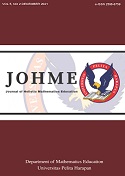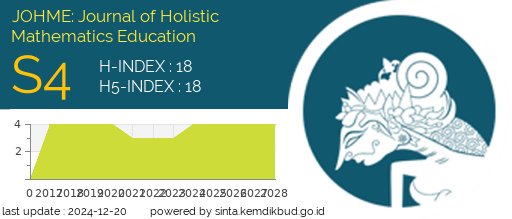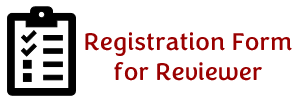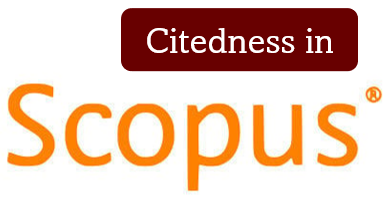THE BINARY GOLDBACH CONJECTURE
DOI:
https://doi.org/10.19166/johme.v5i2.4526Keywords:
Goldbach conjecture, Binary Goldbach conjecture, Ternary Goldbach conjecture, sum of primes, primes in arithmetic progression, prime number theoremAbstract
The Goldbach Conjecture, one of the oldest problems in mathematics, has fascinated and inspired many mathematicians for ages. In 1742 German mathematician Christian Goldbach, in a letter addressed to Leonhard Euler, proposed a conjecture. The modern-day version of the Binary/Strong Goldbach conjecture asserts that: Every even integer greater than 2 can be written as the sum of two primes. The conjecture had been verified empirically up to 4 × 1018, its proof however remains elusive, which seems to confirm that:
Some problems in mathematics remain buried deep in the catacombs of slow progress ... mind stretching mysteries await to be discovered beyond the boundaries of former thought. Avery Carr (2013)
The research was aimed at exposition, of the intricate structure of the fabric of the Goldbach Conjecture problem. The research methodology explores several topics, before the definite proof of the Goldbach Conjecture can be presented. The Ternary Goldbach Conjecture Corollary follows the proof of the Binary Goldbach Conjecture as well as the representation of even numbers by the difference of two primes Corollary. The research demonstrates that the Goldbach Conjecture is a genuine arithmetical question.
References
Brun, V. (1919). Le crible d'Erastothene et le theoreme de Goldbach. Paris, France: C.R. Acad. Sci.
Calude, E. (2009). The complexity of Goldbach's conjecture and Riemann's hypothesis. Albany, NZ: CDMTCS Research, Massey University.
Carr, A. (2013). The strong Goldbach conjecture: An equivalent statement. Retrieved from https://blogs.ams.org/mathgradblog/2013/09/18/equivalent-statement-strong-Goldbach-conjecture
Chen, J. R. (2002). On the representation of a large even integer as the sum of a prime and the product of at most two primes. The Goldbach Conjecture, 275-294. https://doi.org/10.1142/9789812776600_0021
Deshouillers, J., Effinger, H., Te Riele, H., Zinoviev, D. (1997). A complete Vinogradov 3-primes theorem under the Riemann hypothesis. Electronic Research Announcements of the American Mathematical Society, 3, 99-104. Retrieved from https://www.ams.org/journals/era/1997-03-15/S1079-6762-97-00031-0/S1079-6762-97-00031-0.pdf
Doxiadis, A. (2012). Uncle Petros and Goldbach's conjecture. London, UK: Faber & Faber.
Feliksiak, J. (2020). The elementary proof of the Riemann's hypothesis. Retrieved from https://doi.org/10.20944/preprints202006.0365.v2 (2020)
Hardy, G. H., & Littlewood J. E. (1923). Some problems of ”˜Partitio numerorum’; III: On the expression of a number as a sum of primes. Acta Mathematica, 44, 1-70. https://doi.org/10.1142/9789814542487_0002
Kaniecki, L. (1995). On Schnirelman's constant under the Riemann hypothesis. Acta Arthmetica, 72(4), 361-374. Retrieved from http://matwbn.icm.edu.pl/ksiazki/aa/aa72/aa7246.pdf
Shi, H., Mi, Z., Zhang, D., Jiang, X., & He, S. (2019). Even numbers are the sum of two prime numbers. Greener Journal of Science, Engineering and Technological Research, 9(1), 8-11. https://doi.org/10.15580/gjsetr.2019.1.040919068
Vinogradov, I. M. (1934). Some theorems in analytic theory of numbers. Dokl. Akad. Nauk SSSR.
Wang, Y. (2002). Goldbach conjecture. Singapore: World Scientific Publishing Company.Downloads
Additional Files
Published
How to Cite
Issue
Section
License
Authors who publish with this journal agree to the following terms:
1) Authors retain copyright and grant the journal right of first publication with the work simultaneously licensed under a Creative Commons Attribution License (CC-BY-SA 4.0) that allows others to share the work with an acknowledgement of the work's authorship and initial publication in this journal.
2) Authors are able to enter into separate, additional contractual arrangements for the non-exclusive distribution of the journal's published version of the work (e.g., post it to an institutional repository or publish it in a book), with an acknowledgement of its initial publication in this journal.
3) Authors are permitted and encouraged to post their work online (e.g., in institutional repositories or on their website). The final published PDF should be used and bibliographic details that credit the publication in this journal should be included.”










